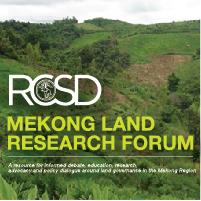Resource information
ABSTRACTED FROM CHAPTER INTRODUCTION: The preceding chapters of this book give a central place to the Powers of Exclusion framework for understanding transformations in land relations, as developed in our 2011 book on Southeast Asia. A couple of the main aspects of the two books make for an interesting comparison. The first is that each employs a regional frame of reference to explore themes in changing land relations. The second is their respective development and application of a common conceptual framework. These commonalities beg the twin questions I seek to address in this chapter: • Are there particular regional characteristics and dynamics that mark land relations with reference to exclusionary processes? • Is the conceptual approach developed in one region applicable or adaptable to another? These questions are explored first by considering what a regional approach to land relations might mean. The main part of this Afterword then makes a number of comparative observations between Melanesia and Southeast Asia, drawing out implications for the ways in which powers of exclusion help frame our understanding of commonalities and differences between regional patterns of changing land relations. The essay concludes with a recap of tensions between common forces reshaping land relations across both regions, on the one hand, and regional specificity on the other.



